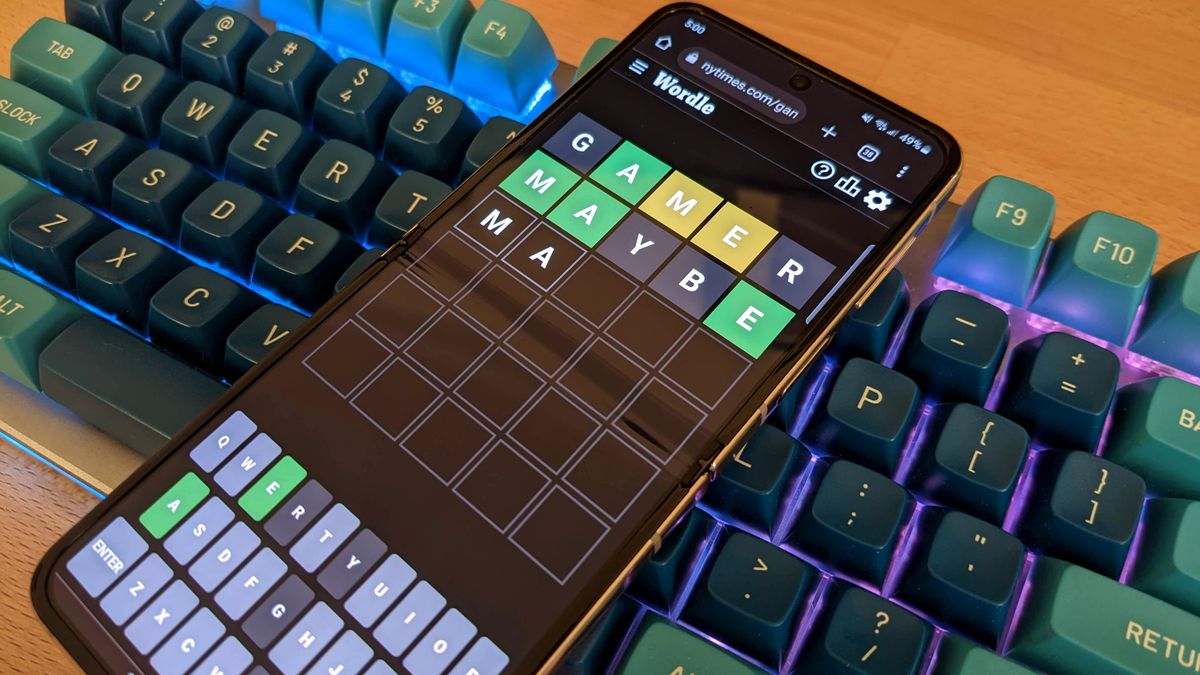[Ed. note: This piece contains spoilers for the penultimate episode of Star Trek: Lower Decks.]
Captain William Boimler, the lead of part one of Star Trek: Lower Decks’ two-part series finale, has a problem that a lot of modern nerds can probably relate to. His secret mission is to hunt down someone who’s been punching portals between dimensions. At every one of these portals, his crew seems to pick up some new alt-universe weirdo who joins the team, and he is done with it. He’s bored to tears with the multiverse — and yet all life has to throw at him is more variants, dimensional portals, and alternate intellectual property timelines.
“Who will it be,” William whines sarcastically in the cold open of “Fissure Quest,” “Neelix with a crew cut? Really big Spock? [...] What a surprise, another Harry Kim. [...] I’m so sick of the [profanity bleep] multiverse.” Cue Lower Decks’ bombastic main theme.
The laws of narrative satisfaction state that a character who’s grown bored of an objectively fantastical thing at the start of the story will learn a valuable lesson about appreciating it before the credits roll, and indeed, before “Fissure Quest” had come to its end, Lower Decks did the impossible: It reminded even this jaded writer of the multiverse’s storytelling potential.
In classic Trek fashion, “Fissure Quest” does this with a monologue from an all-time acting talent. Alfre Woodard guest stars in the episode as an alternate version of Lily Sloane, the character she played in Star Trek: First Contact. This Lily is a Starfleet captain, but in an alternate version of Starfleet that explores the multiverse instead of the universe. And once she and William get in the same room, he has some choice words for her on how lame that is: “We go out into the galaxy and visit strange new worlds. What you do isn’t exploring. [...] The multiverse is just a rehash of stuff I already know.”
Lily acknowledges that, to him, she must look like she’s stuck in one place. The mission of her Starfleet is to seek out the same life and the same civilizations, and boldly go where alternate humanity already is — but the point is to develop a better understanding of what human beings can do.
“It’s fun to learn about aliens,” she tells William, “but learning about humanity, that’s something else. I’ve met humans who’ve built rings around the sun. I’ve met others whose ships are the size of continents. I’m learning about what humans can be. Mapping our potential. So far, it’s limitless.”
This speech alone might seem like a weak excuse, if not for how the rest of the episode backs Lily up. It’s incredible the amount of drama, comedy, and character that “Fissure Quest” packs into its brief run time. Somehow, the writers behind Lower Decks make a half an hour feel like you’re watching a whole Star Trek movie — and a large portion of how they reach those heights is precisely by using William’s crew of multiversal misfits.
That crew is mostly made of variants of Harry Kim, an ensign from Star Trek: Voyager, but also features an alternate T’Pol (Star Trek: Enterprise) and Curzon Dax (Star Trek: Deep Space Nine, sort of), and to the delight of one longtime subset of Deep Space Nine fans, a variant each of Garak and Dr. Bashir who are married to each other.
Anyone who’s watched Star Trek: Voyager will instantly get why it’s funny that you could staff a whole ship with different versions of Harry Kim, the Ensign Who Everything Happens to All the Time. Anyone who’s dug into Deep Space Nine fandom will know that Garak actor Andrew J. Robinson and Bashir actor Alexander Siddig had the sexual tension between their characters in mind from day one. The only reason that an unlikely friendship between alternate versions of Curzon Dax — who only appeared in two episodes of Deep Space Nine, as a corpse and a consciousness possessing Odo, respectively — and T’Pol works in less than 20 minutes is because we’re already familiar with these characters as established elsewhere. And Lily Sloane, who says the whole point out loud, is one of the most unforgettable guest characters in Star Trek history.
Lily’s ode to the potential of humanity is really an ode to the potential of Star Trek in all its forms, and a reminder that, at its best, the multiverse trope has a lot to tell us about the limitless potential of stories — even ones we think we know very well. “Fissure Quest” was a welcome reminder that the multiverse doesn’t have to be an endless cavalcade of explainer-bait references, cheap nostalgia, and propping up IP licenses. It can also give us some of the greatest meditations on a story’s potential ever done.
Not a bad way for the “Silly Version” of Star Trek to go out at all.

 2 weeks ago
9
2 weeks ago
9










 English (US) ·
English (US) ·